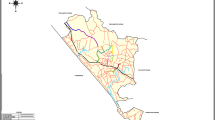Abstract
Lawns and flower are major aesthetical and environmental elements of the urban ecosystem. However, harsh urban conditions such as pollution by heavy metals are unfavorable for plants. For example, copper is toxic for ornamental plants, limiting the spread of lawn grass and flowering plants. Therefore, here we hypothesized that plants could be adapted to urban conditions by breeding. We first showed the possibility of using environmental biotechnology in urban greening to obtain, tolerating copper flowering plants and lawn grasses. We tested the adaptation of creeping bentgrass (Agrostis stolonifera L.) and painted daisy (Chrysanthemum carinatum Schousb.) to сopper. We measured Cu resistance in the next generations of those plant species. Results show that some next generations of plant regenerants have increased resistance up to 100 mg/kg Cu for Agrostis stolonifera, and up to 30 mg/kg for Chrysanthemum carinatum. Our findings thus imply that city plants may be adapted and improved by сell selection. Our approach thus represents a novel biotechnology consisting of adapting plants to pollution by сell selection.





Similar content being viewed by others
Data availability
All data generated or analyzed during this study are included in this published article
Change history
27 October 2021
A Correction to this paper has been published: https://doi.org/10.1007/s11356-021-17225-8
References
Abyzov V.V. (2008) Study of the resistance of strawberry varieties to the effects of heavy metal salts. Materials of the conference Problems of agroecology and adaptability of varieties in modern horticulture in Russia. Orel: 7-12.
Al’-Kholani KAM, Toaima VIM, Dolgikh YI (2010) Production of maize plants with higher resistance to drought by cell selection on medium with mannitol. Biotekhnologiya 1:60–67
Alekseeva-Popova N.V. (1991) Cell-molecular mechanisms of plant metal resistance (review). In: Resistance to heavy metals of wild-growing species. L,Science: 5–15.
Gladkov EA, Dolgikh YI, Gladkova OV (2014) In vitro selection for tolerance to soil chloride salinization in perennial grasses. Sel’skokhozyaistvennaya Biologiya (Agricultural Biology) 4:106–111. https://doi.org/10.15389/agrobiology.2014.4.106
Gladkov EA, Tashlieva II, Dolgikh YI, Gladkova OV (2019) Increasing tolerance Agrostis Stolonifera, Festuca Rubra, Brachycome Iberidifolia, Chrysanthemum Carinatum to copper. In: Cárdenas R, Mochalov V, Parra O, Martin O (eds) Proceedings of the 2nd International Conference on BioGeoSciences. BG 2017. Springer, Cham, pp 167–174
Gomes-Junior RA, Moldes CA, Delite FS, Pompeu GB, Gratão PL, Paulo M, Lea PJ, Azevedo RA (2006) Antioxidant metabolism of coffee cell suspension cultures in response to cadmium. Chemosphere 65:1330–1337. https://doi.org/10.1016/j.chemosphere.2006.04.056
Gori P, Schiff S, Santandrea G, Bennici A (1998) Response of in vitro Cultures of Nicotiana- Tabacum L to copper stress and selection of plants from Cu - tolerant callus. Plant Cell Tissue Org Cult 53(3):161–169. https://doi.org/10.1023/A:1006048031956
Guralchuk Zh Z (1994) Mechanisms of plant resistance to heavy metals. Physiol Biochem Cultiv Plants 26(2):107–118
Husak V (2015) Copper and copper-containing pesticides: metabolism, toxicity and oxidative stress. Journal of Vasyl Stefanyk Precarpathian National University 2(1):38–50. https://doi.org/10.15330/jpnu.2.1.38-50
Jackson PJ, Roth EJ, McClure PR, Naranjo CM (1984) Selection, isolation and characterization of cadmium-resistant Datura innoria suspension culture. Plant Physiol 75:914–918
Lestari EG (2006) In vitro selection and somaclonal variation for biotic and abiotic stress tolerance. Biodiversitas 7(3):297–301. https://doi.org/10.13057/biodiv/d070320
Litvinova II, Gladkov EA (2012) Introduction to cell culture in plants used as fodder, medicinal and decorative for obtaining stress-resistant forms. Sel’skokhozyaistvennaya Biologiya (Agricultural Biology) 4:94–99. https://doi.org/10.15389/agrobiology.2012.4.94
Litvinova I.I., Gladkov E.A., Dolgikh Y. I., Gladkova O.V.(2017) The patent for the invention of the Russian Federation № 2619052. The in vitro method for producing Chrysanthemum carinatum Schousb.
Overview of the state and environmental pollution in the Russian Federation for 2015 (2016) Moscow, Federal Service for Hydrometeorology and Environmental Monitoring (Roshydromet).
Panagos P, Liedekerke M, Van YY, Montanarella L (2013) Contaminated sites in Europe: review of the current situation based on data collected through a European network. J Environ Public Health 2013:1–11. https://doi.org/10.1155/2013/158764
Report on the state of the environment in the city of Moscow in 2011 (2012) Department of Natural Resources and Environmental Protection of the City of Moscow, Moscow.
Report on the state of the environment in the city of Moscow in 2013 (2014) Department of Natural Resources and Environmental Protection of the City of Moscow, Moscow.
Report on the state of the environment in the city of Moscow in 2017 (2018) Department of Natural Resources and Environmental Protection of the City of Moscow, Moscow.
State report on the state and Environmental Protection of the Russian Federation in 2017 (2018) Moscow, Ministry of Natural Resources and Environment of the Russian Federation.
Tsvetkova MV (2003) Estimation of a condition of afforestations of the Moscow region. For Bull 1:65–66
Wei B, Yang L (2010) A review of heavy metal contaminations in urban soils, urban road dusts and agricultural soils from China. Microchem J 94:99–107. https://doi.org/10.1016/j.microc.2009.09.014
Yruela I (2009) Copper in plants: acquisition, transport and interactions. Funct Plant Biol 36:409–430
Тorre AL, Iovino V, Caradonia F (2018) Copper in plant protection: current situation and prospects. Phytopathol Mediterr 57(2):201–236. https://doi.org/10.14601/Phytopathol_Mediterr-23407
Acknowledgments
The authors thank Doctor of Biological Sciences, Professor Dolgikh Y.I., from Timiryazev Institute of Plant Physiology, Russian Academy of Sciences, for the valuable comments when developing the technology for producing copper-resistant plants.
Author сontributions
Evgeny Aleksandrovich Gladkov—51%
Ilina Igorevna Tashlieva—30%
Olga Victorovna Gladkova—19%
Funding
Part of the work was supported by the Ministry of Education and Science of the Russian Federation (topic number АААА-А19-119041890054-8).
Author information
Authors and Affiliations
Corresponding authors
Ethics declarations
Ethics approval and consent to participate
Not applicable.
Consent for publication
Not applicable.
Conflict of interest
The authors declare that they have no competing interests.
Additional information
Responsible Editor: Elena Maestri
Publisher’s note
Springer Nature remains neutral with regard to jurisdictional claims in published maps and institutional affiliations.
Part of the work was done at the Department of Environmental and Industrial Biotechnology, Moscow State University of Mechanical Engineering (earlier Moscow State University of Environmental Engineering), which is currently reorganized.
Rights and permissions
About this article
Cite this article
Gladkov, E.A., Tashlieva, I.I. & Gladkova, O.V. Ornamental plants adapted to urban ecosystem pollution: lawn grasses and painted daisy tolerating copper. Environ Sci Pollut Res 28, 14115–14120 (2021). https://doi.org/10.1007/s11356-020-11423-6
Received:
Accepted:
Published:
Issue Date:
DOI: https://doi.org/10.1007/s11356-020-11423-6




